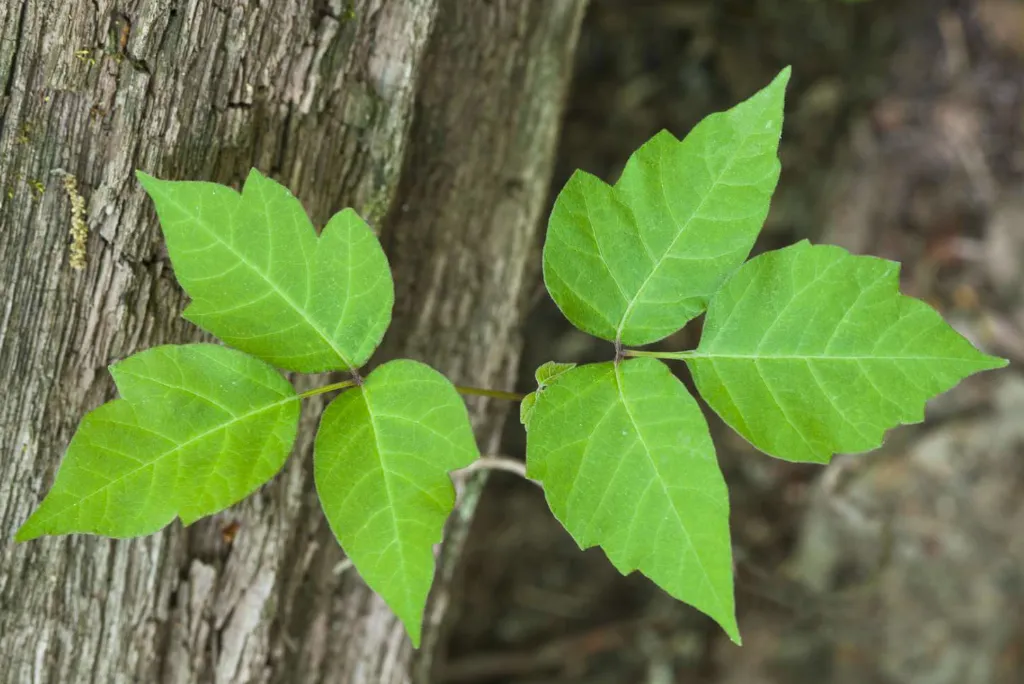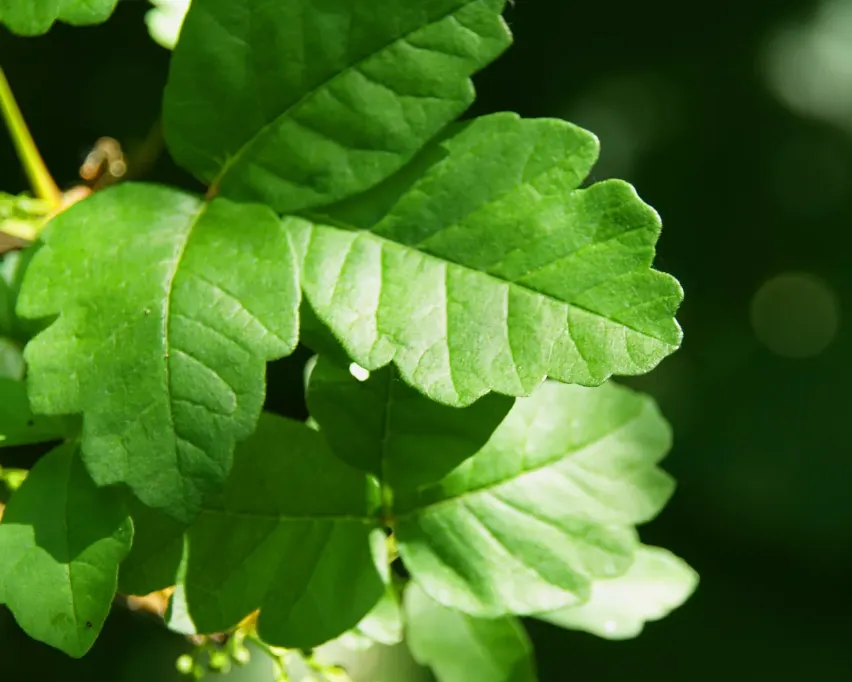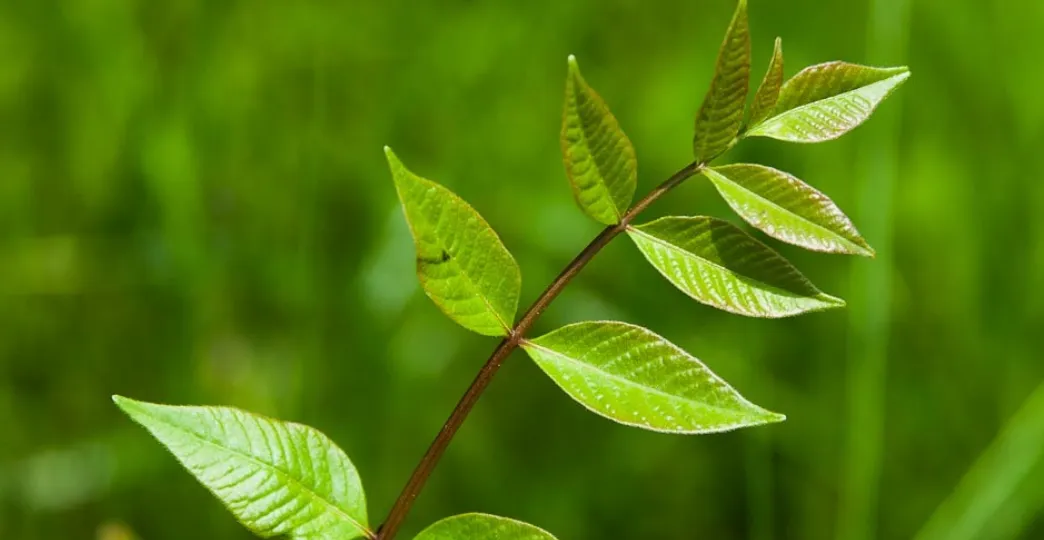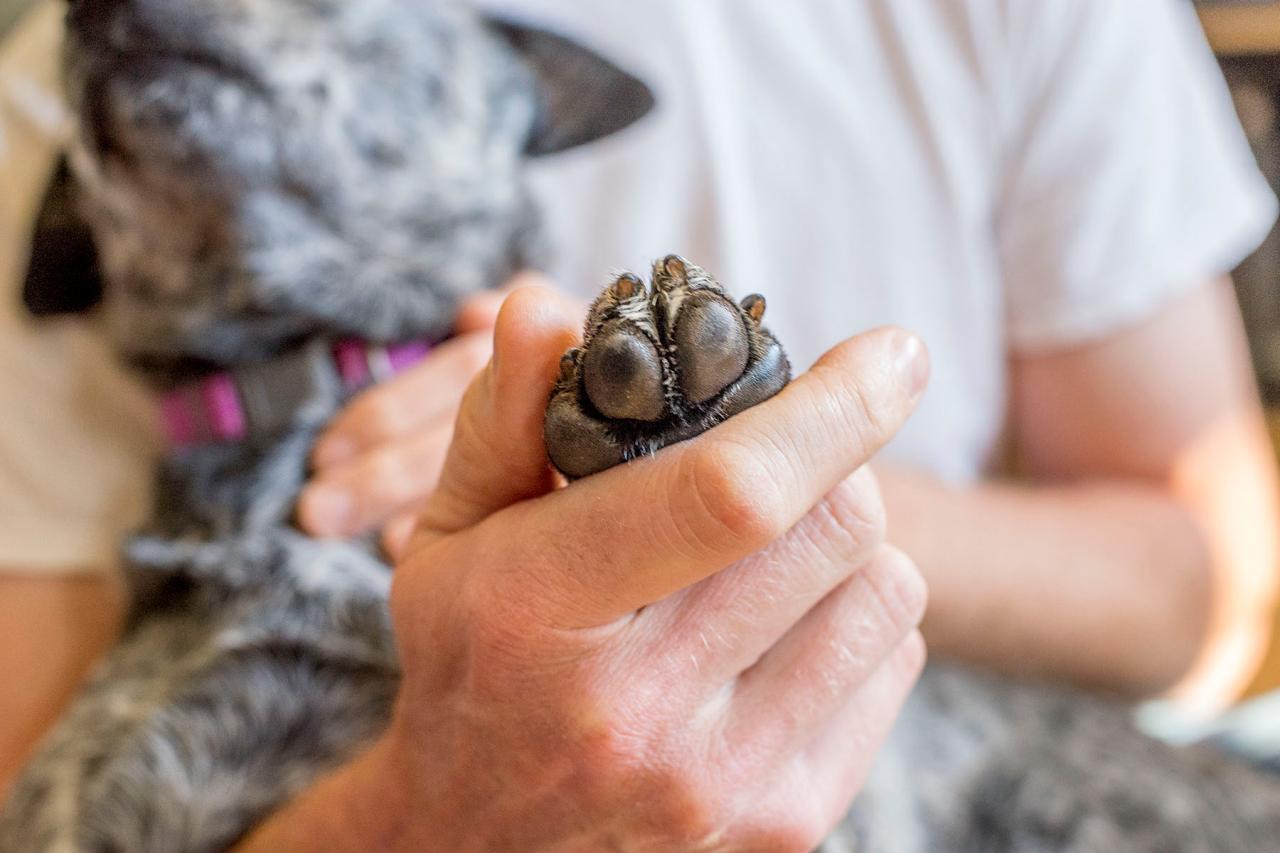For many pet owners, taking their dogs for a walk in the great outdoors is a favorite pastime. However, with the beauty of nature comes potential hazards, such as poisonous plants like poison ivy, oak, and sumac.
These plants can cause severe skin irritation, itching, and discomfort in dogs, and in some cases, even lead to serious health problems. Getting rid of poison ivy, oak, and sumac on dogs can be a daunting task, but with the right knowledge and tools, it is possible to protect our furry friends from the harmful effects of these plants.
In this article, we will discuss how to identify poison ivy, oak, and sumac, what symptoms to look for in dogs who have been exposed, and most importantly, how to effectively remove these toxic plants from your dog's coat and skin.
The Anacardiaceae Family: Poison Ivy, Oak, and Sumac
Poison ivy, oak, and sumac are members of the Anacardiaceae family, a group of plants that are commonly found in North America. These plants contain a resin called urushiol, which is responsible for causing the allergic reaction in humans and animals. The severity of the reaction depends on the amount of exposure and the sensitivity of the individual.
Poison Ivy
Poison ivy is a vine or shrub that is typically found in wooded areas, fields, and along roadsides. It is recognized by its three-leaf configuration, and can grow up to six feet tall. Contact with poison ivy can cause redness, itching, swelling, and blisters on the skin, which can last for several weeks.

Poison Oak
Poison oak is a shrub that is similar in appearance to poison ivy and is often found in wooded areas and along the coast. It has three leaves that are lobed and resemble oak leaves. Like poison ivy, contact with poison oak can cause skin irritation, itching, and blistering.

Poison Sumac
Poison sumac is a tall shrub or small tree that grows in wetland areas, such as swamps and bogs. It has clusters of leaves that are arranged in pairs, with a single leaf at the end. Contact with poison sumac can cause a severe allergic reaction, including swelling, itching, and blistering.
It is important to note that all three of these plants can cause a similar allergic reaction, and it is crucial to avoid contact with them as much as possible. If you suspect that you or your dog has been exposed to any of these plants, it is essential to seek medical attention immediately.

How to Treat Poison Ivy for Dogs
If your dog has come into contact with poison ivy, there are several steps you can take to help alleviate their symptoms and treat the rash.
Here are some tips:
Identify the Poison Ivy: First, make sure that you can correctly identify the plant that caused the rash. Poison ivy typically has leaves that grow in groups of three, and the leaves are often glossy and green.
Bathe Your Dog: Use lukewarm water to bathe your dog, and be sure to use a mild pet-friendly soap. This will help remove any oils from the poison ivy plant that may be on your dog's skin and coat. Be sure to rinse thoroughly, and avoid getting soap in your dog's eyes.
Apply a Cool Compress: If your dog is experiencing discomfort from the rash, you can apply a cool compress to the affected area. This will help soothe the skin and reduce inflammation.
Consult with a Veterinarian: If your dog's symptoms persist or worsen, it is best to consult with a veterinarian. They may prescribe medication to help alleviate your dog's symptoms, such as antihistamines or steroids.
Prevent Future Exposure: To prevent your dog from getting poison ivy again in the future, be sure to keep them away from areas where the plant grows, and always check your dog's coat and paws after a walk in a wooded area.
How to Treat Poison Oak for Dogs
If your dog has come into contact with poison oak, there are several steps you can take to help alleviate their symptoms and treat the rash.
Here are some tips:
Identify the Poison Oak: First, make sure that you can correctly identify the plant that caused the rash. Poison oak typically has leaves that grow in groups of three, and the leaves are often lobed and shaped like oak leaves.
Bathe Your Dog: Use lukewarm water to bathe your dog, and be sure to use a mild pet-friendly soap. This will help remove any oils from the poison oak plant that may be on your dog's skin and coat. Be sure to rinse thoroughly, and avoid getting soap in your dog's eyes.
Apply a Cool Compress: If your dog is experiencing discomfort from the rash, you can apply a cool compress to the affected area. This will help soothe the skin and reduce inflammation.
Use Calamine Lotion: You can apply a small amount of calamine lotion to your dog's rash. This will help relieve itching and dry out the rash. Be sure to use a brand that does not contain zinc oxide, which can be toxic to dogs if ingested.
Consult with a Veterinarian: If your dog's symptoms persist or worsen, it is best to consult with a veterinarian. They may prescribe medication to help alleviate your dog's symptoms, such as antihistamines or steroids.
Prevent Future Exposure: To prevent your dog from getting poison oak again in the future, be sure to keep them away from areas where the plant grows, and always check your dog's coat and paws after a walk in a wooded area.
How to Treat Poison Sumac for Dogs
Discover the steps you can take to alleviate your dog's symptoms and treat the rash if they've come into contact with poison sumac.
Identify the Poison Sumac: First, make sure that you can correctly identify the plant that caused the rash. Poison sumac typically has leaves that grow in clusters of 7 to 13, and the leaves are often smooth and oval-shaped.
Bathe Your Dog: Use lukewarm water to bathe your dog, and be sure to use a mild pet-friendly soap. This will help remove any oils from the poison sumac plant that may be on your dog's skin and coat. Be sure to rinse thoroughly, and avoid getting soap in your dog's eyes.
Apply a Cool Compress: If your dog is experiencing discomfort from the rash, you can apply a cool compress to the affected area. This will help soothe the skin and reduce inflammation.
Use Hydrocortisone Cream: You can apply a small amount of hydrocortisone cream to your dog's rash. This will help to relieve itching and reduce inflammation. Be sure to use a brand that is specifically formulated for dogs and follow the instructions carefully.
Consult with a Veterinarian: If your dog's symptoms persist or worsen, it is best to consult with a veterinarian. They may prescribe medication to help alleviate your dog's symptoms, such as antihistamines or steroids.
Prevent Future Exposure: To prevent your dog from getting poison sumac again in the future, be sure to keep them away from areas where the plant grows, and always check your dog's coat and paws after a walk in a wooded area.
What if My Dog Eats Poison Plants?
If you suspect that your dog has eaten a poisonous plant, it is important to seek veterinary attention immediately. Here are some steps you can take:
Identify the Plant: Try to identify the plant that your dog has ingested, as this information can be helpful to your veterinarian in determining the appropriate treatment.
Call Your Veterinarian: Call your veterinarian or the Animal Poison Control Center (APCC) immediately. They can provide guidance on how to proceed and may recommend that you bring your dog in for treatment.
Observe Your Dog: Watch your dog closely for any signs of poisoning, such as vomiting, diarrhea, lethargy, loss of appetite, or seizures. Make note of any symptoms that your dog experiences, as this information can be helpful to your veterinarian.
Do Not Induce Vomiting: Do not attempt to induce vomiting unless directed to do so by a veterinarian or the APCC, as some plants can cause more harm if vomited up.
Bring Samples of the Plant: If possible, bring samples of the plant with you to the veterinarian, as this can help with identification and treatment.
Follow Your Veterinarian's Instructions: Follow your veterinarian's instructions carefully, and be sure to administer any medications or treatments as directed.
Overall, it is important to take action quickly if you suspect that your dog has eaten a poisonous plant. Seeking veterinary attention immediately can help to prevent further harm and increase your dog's chances of a full recovery.
Will My Dog Need a Vet Visit From Poison Plants?
If your dog comes into contact with a poisonous plant, it is best to err on the side of caution and seek veterinary attention. While some plants may cause only minor irritation or discomfort, others can be extremely toxic and potentially life-threatening.
The severity of your dog's reaction will depend on the type of plant, the amount ingested or contacted, and your dog's overall health. Some dogs may only experience mild symptoms, such as skin irritation or upset stomach, while others may experience more severe symptoms, such as seizures or respiratory distress.
If your dog has ingested a poisonous plant, or if they are experiencing any symptoms such as vomiting, diarrhea, lethargy, or difficulty breathing, it is best to seek veterinary attention immediately. Your veterinarian can assess your dog's condition, provide appropriate treatment, and monitor them for any potential complications.
Other Plant Dangers While Outside
In addition to poisonous plants, there are other plant dangers that pet owners should be aware of while outside with their dogs. These include:
- Foxtails: Foxtails are a type of grass seed that can become embedded in a dog's skin, ears, eyes, nose, or mouth. They can cause infections and other health issues if not promptly removed.
- Mushrooms: Some types of mushrooms can be toxic to dogs if ingested. It is best to keep your dog away from any mushrooms you see while out on walks.
- Pesticides and Herbicides: Chemicals used to treat lawns and gardens can be toxic to dogs if ingested or absorbed through the skin. Be cautious when walking your dog in areas that have been treated with chemicals.
- Allergenic Plants: Some dogs may be allergic to certain types of plants, such as ragweed or pollen-producing trees. These allergies can cause skin irritation, respiratory issues, and other health problems.
- Invasive Plants: Invasive plant species, such as kudzu or poison hemlock, can be harmful to dogs if ingested or contacted.
To keep your dog safe while outside, be sure to keep them on a leash and supervise them closely. Avoid letting them eat or chew on any plants or grasses, and be aware of any potential hazards in the area.
Protect Your Dog With Skin & Coat Supplements
Skin and coat supplements can help improve the health and appearance of your dog's skin and coat. They typically contain ingredients such as omega-3 fatty acids, vitamins, and minerals that can help nourish and strengthen your dog's skin and coat from the inside out.
By incorporating skin and coat supplements into your dog's diet, you may be able to help reduce shedding, alleviate dry or itchy skin, and promote a shiny, healthy coat. However, it is important to consult with your veterinarian before starting your dog on any new supplements or dietary changes.
Final Thoughts
As a final thought, it is important to remember that our dogs rely on us to keep them safe and healthy. This includes protecting them from potential plant dangers while outside and providing them with proper nutrition and care.
By being aware of common plant hazards, such as poisonous plants and foxtails, and taking steps to prevent exposure, we can help keep our furry friends safe and healthy. Additionally, working with a veterinarian and incorporating supplements or other dietary changes as needed can help ensure that our dogs are getting the nutrients they need for optimal health.
As responsible pet owners, it is our duty to provide our dogs with the best care possible, and with proper attention and care, we can help them lead happy, healthy lives.
For additional pet-parenting tips, head over to TryFi.com's Off Leash blog.
And don't forget to check out TryFi's innovative Fi Dog Collar, which offers GPS tracking, activity monitoring, and escape alerts to keep your furry friend safe. Try the Fi Dog Collar today!






